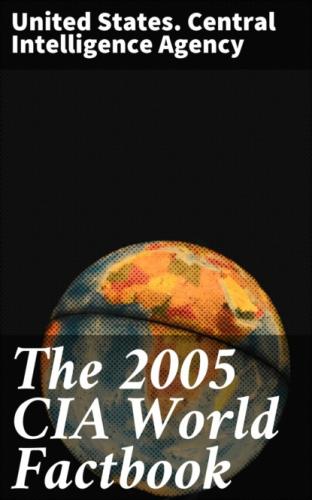coast and average slightly below freezing
Terrain:
about 98% thick continental ice sheet and 2% barren rock, with
average elevations between 2,000 and 4,000 meters; mountain ranges
up to nearly 5,000 meters; ice-free coastal areas include parts of
southern Victoria Land, Wilkes Land, the Antarctic Peninsula area,
and parts of Ross Island on McMurdo Sound; glaciers form ice shelves
along about half of the coastline, and floating ice shelves
constitute 11% of the area of the continent
Elevation extremes:
lowest point: Bentley Subglacial Trench −2,555 m
highest point: Vinson Massif 4,897 m
note: the lowest known land point in Antarctica is hidden in the
Bentley Subglacial Trench; at its surface is the deepest ice yet
discovered and the world's lowest elevation not under seawater
Natural resources:
iron ore, chromium, copper, gold, nickel, platinum and other
minerals, and coal and hydrocarbons have been found in small
uncommercial quantities; none presently exploited; krill, finfish,
and crab have been taken by commercial fisheries
Land use: arable land: 0% permanent crops: 0% other: 100% (ice 98%, barren rock 2%) (2001)
Irrigated land:
0 sq km
Natural hazards:
katabatic (gravity-driven) winds blow coastward from the high
interior; frequent blizzards form near the foot of the plateau;
cyclonic storms form over the ocean and move clockwise along the
coast; volcanism on Deception Island and isolated areas of West
Antarctica; other seismic activity rare and weak; large icebergs may
calve from ice shelf
Environment - current issues:
in 1998, NASA satellite data showed that the antarctic ozone hole
was the largest on record, covering 27 million square kilometers;
researchers in 1997 found that increased ultraviolet light passing
through the hole damages the DNA of icefish, an antarctic fish
lacking hemoglobin; ozone depletion earlier was shown to harm
one-celled antarctic marine plants; in 2002, significant areas of
ice shelves disintegrated in response to regional warming
Geography - note:
the coldest, windiest, highest (on average), and driest continent;
during summer, more solar radiation reaches the surface at the South
Pole than is received at the Equator in an equivalent period; mostly
uninhabitable
People Antarctica
Population:
no indigenous inhabitants, but there are both permanent and
summer-only staffed research stations
note: 26 nations, all signatory to the Antarctic Treaty, operate
seasonal (summer) and year-round research stations on the continent
and in its surrounding oceans; the population of persons doing and
supporting science on the continent and its nearby islands south of
60 degrees south latitude (the region covered by the Antarctic
Treaty) varies from approximately 4,000 in summer to 1,000 in
winter; in addition, approximately 1,000 personnel including ship's
crew and scientists doing onboard research are present in the waters
of the treaty region; summer (January) population - 3,687 total;
Argentina 302, Australia 201, Belgium 13, Brazil 80, Bulgaria 16,
Chile 352, China 70, Finland 11, France 100, Germany 51, India 60,
Italy 106, Japan 136, South Korea 14, Netherlands 10, NZ 60, Norway
40, Peru 28, Poland 70, Russia 254, South Africa 80, Spain 43,
Sweden 20, UK 192, US 1,378 (1998–99); winter (July) population -
964 total; Argentina 165, Australia 75, Brazil 12, Chile 129, China
33, France 33, Germany 9, India 25, Japan 40, South Korea 14, NZ 10,
Poland 20, Russia 102, South Africa 10, UK 39, US 248 (1998–99);
research stations operated within the Antarctic Treaty area (south
of 60 degrees south) by members of the Council of Managers of
National Antarctic Programs (COMNAP): year-round stations - 38
total; Argentina 6, Australia 3, Brazil 1, Chile 4, China 2, France
1, Germany 1, India 1, Japan 1, South Korea 1, NZ 1, Poland 1,
Russia 6, South Africa 1, Ukraine 1, UK 2, US 3, Uruguay 1, Italy
and France jointly 1 (2005); summer-only stations - 34 total;
Argentina 8, Australia 2, Bulgaria 1, Chile 5, Ecuador 1, Finland 1,
Germany 2, Italy 1, Japan 3, Norway 2, Peru 1, Russia 2, South
Africa 1, Spain 2, Sweden 1, UK 1 (2004–2005); in addition, during
the austral summer some nations have numerous occupied locations
such as tent camps, summer-long temporary facilities, and mobile
traverses in support of research
Government Antarctica
Country name: conventional long form: none conventional short form: Antarctica
Government type: Antarctic Treaty Summary - the Antarctic Treaty, signed on 1 December 1959 and entered into force on 23 June 1961, establishes the legal framework for the management of Antarctica; the 27th Antarctic Treaty Consultative Meeting was held in Cape Town, South Africa in May-June 2004; at these periodic meetings, decisions are made by consensus (not by vote) of all consultative member nations; at the end of 2003, there were 45 treaty member nations: 28 consultative and 17 non-consultative; consultative (decision-making) members include the seven nations that claim portions of Antarctica as national territory (some claims overlap) and 21 non-claimant nations; the US and Russia have reserved the right to make claims; the US does not recognize the claims of others; Antarctica is administered through meetings of the consultative member nations; decisions from these meetings are carried out by these member nations (with respect to their own nationals and operations) in accordance with their own national laws; the year in parentheses indicates when an acceding nation was accepted as a consultative member, while no date indicates the country was an original 1959 treaty signatory; claimant nations are - Argentina, Australia, Chile, France, New Zealand, Norway, and the UK. Nonclaimant consultative nations are - Belgium, Brazil (1983), Bulgaria (1998) China (1985), Ecuador (1990), Finland (1989), Germany (1981), India (1983), Italy (1987), Japan, South Korea (1989), Netherlands (1990), Peru (1989), Poland (1977), Russia, South Africa, Spain (1988), Sweden (1988), Ukraine (1992), Uruguay (1985), and the US; non-consultative members, with year of accession in parentheses, are - Austria (1987), Canada (1988), Colombia (1989), Cuba (1984), Czech Republic (1993), Denmark (1965), Estonia (2001), Greece (1987), Guatemala (1991), Hungary (1984), North Korea (1987), Papua New Guinea (1981), Romania (1971), Slovakia (1993), Switzerland (1990), Turkey (1995), and Venezuela (1999); Article 1 - area to be used for peaceful purposes only;
